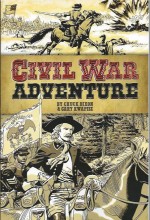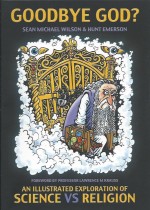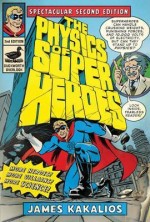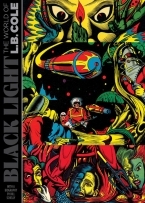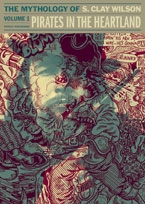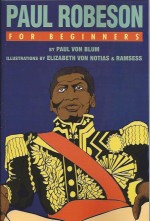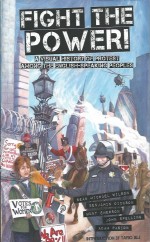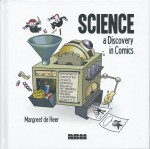I started out in this game just before the pyramids were built, making minicomics, collaborating on fanzines and concocting stripzines with fellow weirdoes, outcasts and comics addicts. Even today, seeing the raw stuff of creativity in hand-crafted paper pamphlets – or better yet professionally printed packages which put dreamers’ money where their mouths are – still gets me going in ways that threaten my tired old heart…
With that in mind here’s a quartet of little gems and treats that have landed in my review tray recently…
Wolf Country #1-4
By Jim Alexander, Will Pickering & Luke Cooper (Planet Jimbot)

No ISBNs:
As well as stunning graphic novels, independent publisher Planet Jimbot (likely lads Jim Alexander & Jim Campbell) also deliver proper comicbooks, and possibly their best title of the moment is an eerie ongoing otherworld religio-political saga with disturbing echoes of Westerns like Unforgiven and The Searchers.
Of course here the “good guys†are a sect of devout vampires stuck in a fort in the desolate badlands, surrounded by hostile tribes of werewolves, whilst their own progress-minded government are methodically abandoning the old ways they cherish in favour of a soulless, ruthless, rationalist super-state…
Wolf Country #1 by Alexander and illustrator Luke Cooper opens in the big city and introduces ‘Luke’, a young man with a potent future which begins to unfold when a gigantic wolf-thing goes rogue in the metropolis yet is somehow miraculously destroyed by the inconsequential waif.
Three years later the infamous “Boy Who Killed Wolf†has relocated to The Settlement, a fundamentalist outpost on the frontier between vampire and werewolf territories where the faithful follow the doctrines of their Holy Scriptures and daily confront their eternal enemies in the traditional ways. Here, after a close encounter with the hirsute savages, young Luke explains what actually happened that night to his companion, mentor and chief scout Carmichael…
The boy’s unlikely feat made him an overnight sensation among vampire-kind, a symbol of prophecy proved; but the adulation and agendas of others were not for him and as soon as he reached his majority – and despite being an unbeliever – he headed out to The Settlement to live his own life and seek his own answers…
Perhaps it was that drive that compelled him to go native and stay out all alone in the wilderness after he and Carmichael narrowly escaped a wolf attack…
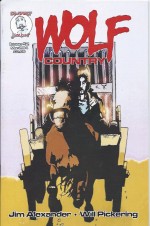
Wolf Country #2 finds Will Pickering taking up the illustrator’s burden – although Cooper remains as cover artist – as ‘Kingdom Come’ follows Settlement leader Zealot Halfpenny as he reluctantly transports a captured werewolf back to the decadent, science-loving city.
It is not his idea. As the helicopter takes the sacrificial beast to The Kingdom for the populace’s regular Bread-and Circuses bloodletting, Halfpenny is ordered to stay aboard whilst a contingent of arrogant, irreverent, heavily-armed troops billet themselves in his spartan badlands fort.
It seems the High Executor himself wants to see the leader of the quaint religious freaks. Apparently there is talk and fallout over The Settlement’s loss of the legendary and beloved “Boy Who Killed Wolfâ€â€¦
Later, whilst menacing atheist Sergeant Urquhart attempts to intimidate and dominate the settlers, in faraway City Chambers Halfpenny learns the real reason he has been summoned…
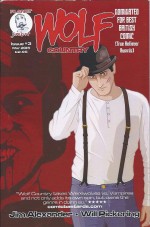
The suspense mounts in ‘Wax and Wane’ (WC #3, which also proudly lists the plethora of awards the first two issues garnered) when, at the Settlement, Urquhart presses the devout throwbacks into joining him in a sortie against the lupine tribes just as the moon enters its most dangerous phase.
Meanwhile in the Kingdom, Halfpenny is dragooned into working as a stalking horse for the draconian Department of Purity, interviewing a radical named Fabian currently living in the bloodily bohemian enclave of wrong-thinkers and backwards-lookers dubbed “Free Stateâ€â€¦
In the badlands natural foes Carmichael and Urquhart warily test each other out and quite forget who their real enemies are, but in Free State Halfpenny’s interview with Fabian goes disastrously awry. The rebel has honeyed words and access to sacred writings which shake the pious outsider to his core, but before he can properly form a response the Executor’s troops move in and start slaughtering…
Meanwhile back at the Settlement, with the soldiers and male settlers still deep in-country, the massed wolf tribes attack the fort…

Fresh off the presses, Wolf County #4 (with supplemental interior art from Cooper) brings us up to date and pops the mounting tension bubble with all-out action as the Settlement walls are breached before the ‘Cavalry’ arrive, whilst in Free State a murderous riot ensues and Halfpenny reveals the uncanny abilities which underpin his ferocious reverence to Scripture…
And in the bloody aftermath at the fort, an unchecked and out-of-control Urquhart now turns his sadistic attention on the settlers in his quest for the truth about Luke’s whereabouts…
To Be Continued…
Brooding, intriguing and utterly compelling from the get-go, Wolf Country takes an overworked trope and transfuses it with new sparkle and true potency as heroism, passion, faith and ambition all take a pounding as a war between Church and State becomes increasingly derailed by hairy barbarians at the gate and the visions of an outrider from the wilderness divining a dangerous and radical third way for all…
Story © 2013, 2014, 2015 Jim Alexander. Art © 2014, 2015 Will Pickering. Issue one art © 2013, Luke Cooper.
Wolf Country and other fine comics and books are available at the Planet Jimbot shop so go to : https://www.etsy.com/uk/shop/PlanetJimbot

